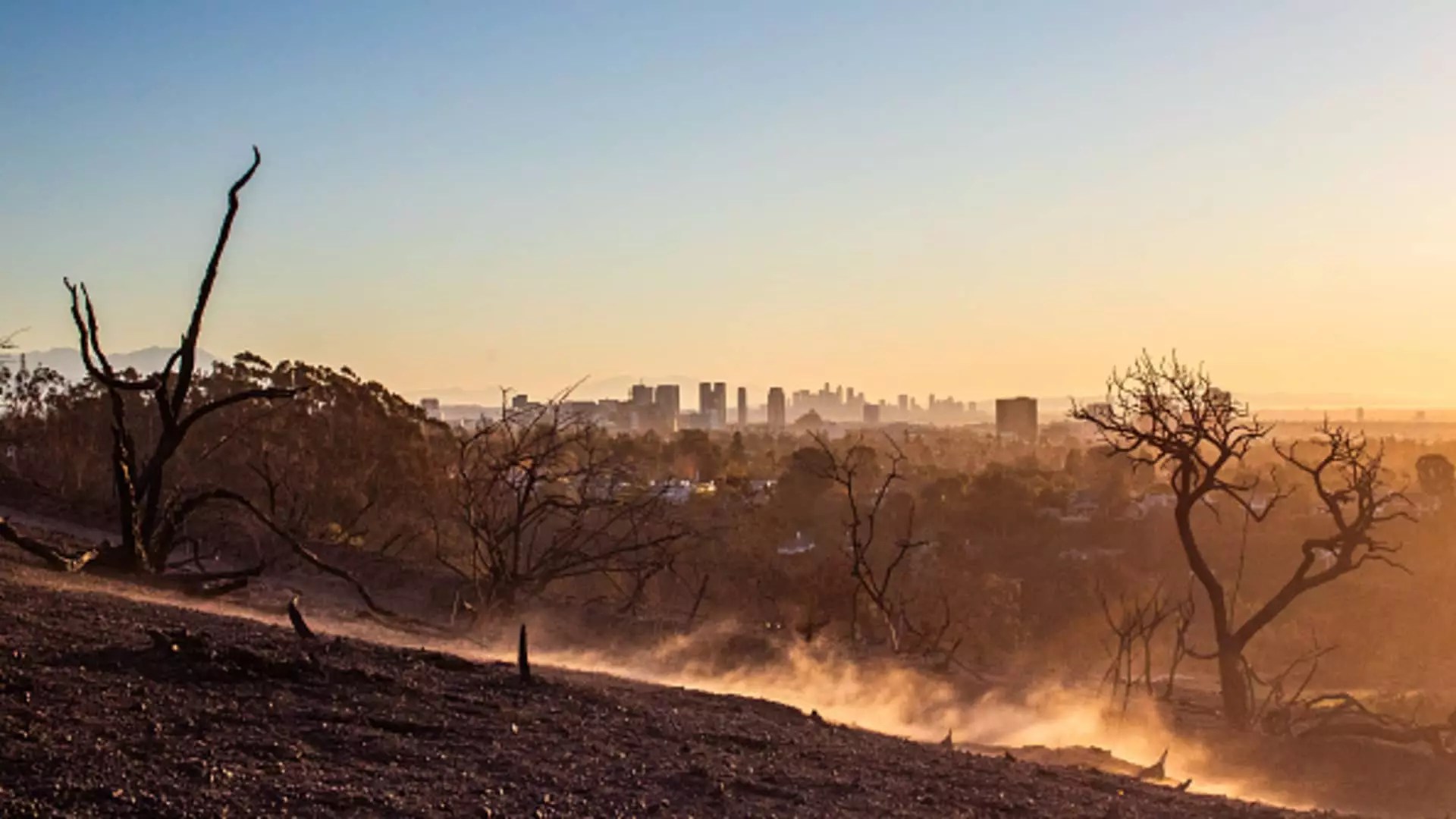In recent years, the insurance landscape in the United States, particularly California, has undergone a drastic transformation due to intensifying climate phenomena. As natural disasters, such as wildfires, floods, and severe storms, become more frequent, homeowners are confronting a troubling reality: their insurance premiums are on an upward trajectory. The devastating wildfires in Los Angeles this year have accentuated this trend, spurring analysts to project that insured losses could exceed $20 billion, potentially rendering it the costliest wildfire in American history. The implications for homeowners, insurers, and the broader market are profound and, in many ways, concerning.
Insurance rates have been escalating even before the catastrophic wildfires in California. The core reason behind this spike in premiums lies in the increasing unpredictability and severity of natural disasters. A recent statement by Patrick Douville, a vice president at Morningstar, highlights the necessity for risk-based pricing during this tumultuous time. As insurers strive to cover the rising costs of claims, homeowners may inadvertently face higher premiums, leading to potential affordability crises and diminished property values. Analysts warn that this trend of increasing premiums is unlikely to abate; in fact, it may be exacerbated by recent disasters.
California’s insurance landscape is undergoing changes too. New regulations have created an environment where rate increases are permissible in return for enhanced coverage in wildfire-prone areas. For instance, in 2024, several insurance companies in the state raised their rates by an astounding 34%. This regulatory shift represents a marked departure from more stable pricing models, suggesting that consumers are likely to face continued and significant insurance cost escalations in the near future.
Although the upheaval in California insurance rates captures headlines, it’s essential to understand that the implications of increased natural disaster frequency extend beyond state borders. Even homeowners in states with lower exposure to extreme weather events may feel the impact. Janet Ruiz from the Insurance Information Institute clarifies that rates in one state are not directly influenced by losses in another; nonetheless, insurers operating across multiple states may compensate for significant losses in one area by raising premiums in others, leading to discrepancies in insurance pricing nationally.
As insurers grapple with the fallout of disasters like the Southern California wildfires, those in less-regulated states may also experience premium fluctuations. Insurance professionals report a rise in inquiries regarding potential increases from clients living in areas that seem insulated from the severe disasters affecting California. However, the reality is that the overarching trend of escalating natural disasters could unearth financial pressures that permeate through regions previously thought to be safe.
Natural disasters are not just causing immediate havoc; they are altering the fundamental economics of home insurance. Recent data illustrates that between 2018 and 2023, home insurance rates have jumped by more than 33%, with a staggering increase of 11.3% occurring in just 2023. Such trends have resulted in the average homeowner now paying an annual premium of approximately $2,181 for a policy covering a $300,000 dwelling – a notable increase compared to previous years. Experts warn that this trend might continue, further burdening those already wrestling with financial stability.
In tandem with rising premiums, there’s also the concern of underinsurance. A multitude of homeowners may not realize the full extent of coverage needed in light of skyrocketing rebuilding costs. A home that could have been repaired for $166 per square foot just a few years ago now may exceed $300. Many homeowners, often blinded by the complexities of insurance renewals, might overlook the necessity of adjusting their coverage to reflect current rebuilding costs accurately. This oversight can lead to severe consequences when disaster strikes.
Navigating this new landscape requires homeowners to be proactive. Financial advisors recommend homeowners consult with insurance agents or local contractors annually to reassess their coverage needs and ensure their policies reflect the current cost of rebuilding. Additionally, homeowners should consider specific risks that may not be covered under standard homeowners insurance, such as flood damage, which requires a separate policy.
Mitigating risk goes beyond simply adjusting coverage; it’s about creating a comprehensive understanding of potential hazards and equipping properties with the tools necessary to withstand them. As extreme weather becomes increasingly common, awareness and preparedness can significantly buffer the financial and emotional toll of inevitable natural disasters.
The ramifications of growing natural disasters on homeowners insurance are unequivocal. While the current cycle of premium increases may seem specific to high-risk areas like California, the reality is more nuanced and impacts the entire nation. Homeowners must remain vigilant, informed, and prepared as they navigate a rapidly changing environment that calls for both awareness and proactive measures. The road ahead may be fraught with challenges, but with careful planning and understanding, homeowners can mitigate some of the risks associated with this turbulent era.


Leave a Reply